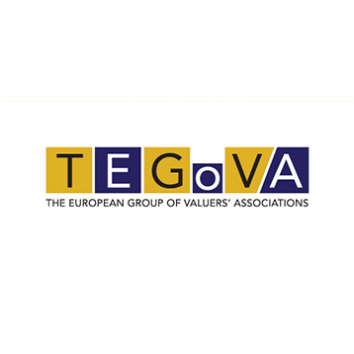TEGoVA General Assembly endorses new European Valuation Standard on Automated Valuation Models During TEGoVA’s General Assembly in Marseilles on 28th October last, 95 delegates representing 52 valuers' associations from 29 countries overwhelmingly endorsed a new European Valuation Standard (EVS 6) concerning the use of Automated Valuation Models (AVM).
The key message of EVS 6 with immediate effect is that:"AVMs cannot be used to produce a valuation report that complies with EVS independently of a valuation process founded, inter alia, on inspection of the property by the valuer and the application of valuation judgment by the valuer. Where used, an AVM is never more than a tool contributing to the valuer's estimation of value, for which he remains responsible."
EVS 6 emphasizes that an AVM is not a valuation. It can serve as a starting point for some buyers and sellers in considering a property's value. It can be used by the qualified valuer as one input in his comprehensive analysis of the market provided he is satisfied with his knowledge of the AVM's input data and model.
The need for such a standard had become evident over the last few years, during which AVMs have become much more widespread as a result of a drive towards rationalization in the property and financial sector. But abusive use of AVMs was one of the reasons for the financial crisis, as was stated in the final report of the parliamentary committee of inquiry of 27th January 2016 regarding the Irish banking crisis: “More widely, however, the demand for asset valuations increased significantly as the property boom took hold and reliance on informal valuation standards, such as ‘desktop’ and ‘drive-by’ valuations, became more prevalent. These did not involve any physical inspection of the property, but we're limited (and sometimes fully automated or computer generated) process of estimating value. A Central Bank review of financial institutions found that many used these informal valuations as if they were formal valuations …”.
Article 19 of the Mortgage Credit Directive, and Article 229(1) of the Capital Requirements Regulation, in particular, imply that AVMs cannot be used to provide property valuations independently of professionally competent internal and external valuers. The opinions and guidelines of the European Banking Authority (EBA) and the Financial Stability Board (FSB) both mirror and justify this requirement. Whilst the Mortgage Credit Directive does not address AVMs as such, the limitations on their use follow from the Directive’s insistence on the use of reliable valuation standards by “professionally competent internal and external appraisers” (Article 19). The Capital Requirements Regulation is also very clear that property valuation needs to be done by a qualified valuer and on the question of statistical methods of valuation states: “Institutions may use statistical methods to monitor the value of the property and to identify property that needs revaluation.” (Article 208(3), last sentence). According to that provision, the application of statistical methods (including the use of AVMs) can only be engaged to monitor the value of the property and to identify property that needs revaluation. The use of such methods is not allowed for the actual valuation of the immovable property. This applies a fortiori to the original or first-time valuations where no value has yet been established and can be monitored
The General Assembly adopted a new TEGOVA European valuation Standard (EVS 6)
According to the magazine "The European valuer"
www.tegova.org

